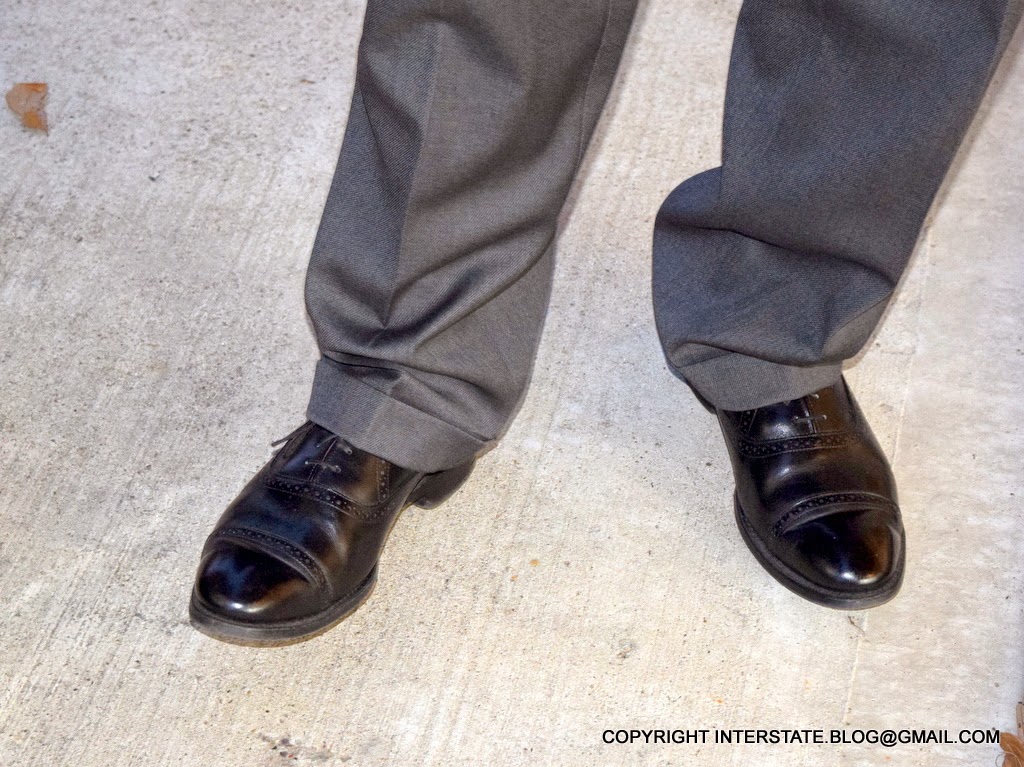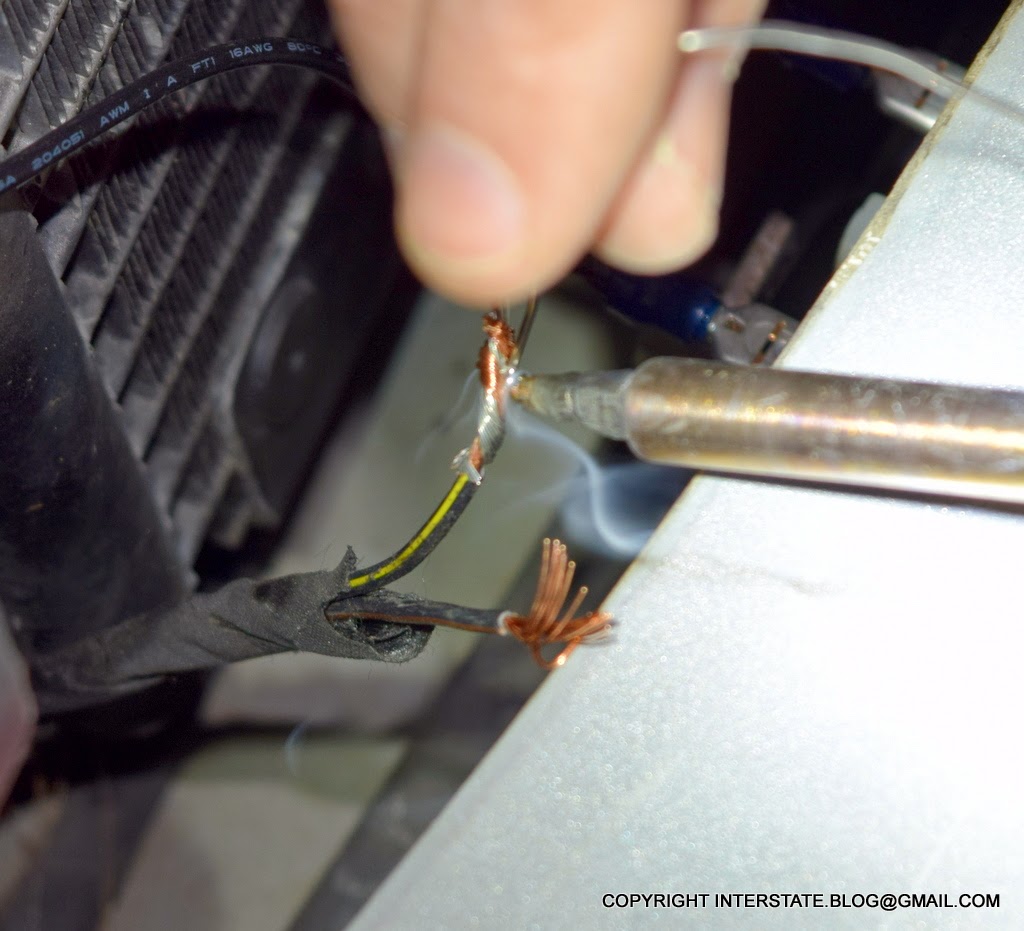When we purchased our 2007
Airstream Interstate in September 2014, we had a number of systemic upgrades and repairs that we needed to tackle, but to our delight, the
Dometic 2351 refrigerator was not among the malfunctioning systems. In fact, on our first couple of trips, we were impressed by how well it worked - it kept our food very cold.
 |
| It was original equipment in our Interstate, thus 7 years old at the time of purchase. We initially were not sure how it would perform, but it's nice to have a pleasant surprise now and again. |
Fast forward five months and on a routine and unremarkable overnight trip, suddenly our dear Dometic became dearly departed - it simply stopped cooling. This post describes some of the troubleshooting steps we took to restore it to operation (see also this thread titled "
Dometic will not work" for additional tips, plus there are other Dometic-related threads on Air Forums and on other RV boards).
 |
| At first we thought that the little front panel had gone bad, because the Auto light was clearly winking on and off. Sometimes it would need to be pressed five or six times before it would actually engage. But then when it did engage to the point where we had a persistent solid light, the fridge would still not cool. |
 |
| Replacing this component is very simple - some guy sells them on eBay for about $25. All you need to do is unscrew the front face of the fridge, remove this piece, detach the multi-pin connector that fits into the slot indicated by the red arrow, and reassemble. |
Having done that much, what we ended up with was resolution of the winking Auto light - it remained solid from that point forward. But the fridge still would not cool, so clearly there was more to the situation.
At that point I phoned our closest local RV service center, which is
Dues Camping Center in League City Texas, and asked if they could diagnose a Dometic. The gracious gentleman who answered the phone said yes but he advised me to do this first: Turn on the Dometic and 24 hours later, open up the back and feel the coils. If a heat differential could be felt across the coils but the interior of the fridge was still not cool, then the cooling unit itself is probably kaput, which essentially means that the fridge is a write-off because it costs so much to replace the cooling unit that you might as well buy a new fridge.
 |
| In order to get at the coils, you have to open up the hatch on the exterior of the vehicle to access the back of the fridge. There should be a ventilation panel that looks something like this, if your rig has a propane fridge. |
So we did that as instructed, but we felt no heat whatsoever anywhere. Which suggested that the fridge wasn't even starting up despite the fact that the Auto light was on. Which led my husband to research various on-line forums. Which led him to conclude that the most likely next culprit was the control board.
 |
| The controller is that contraption with the black plastic housing marked by the number 1. I will describe number 2 toward the end of this post. |
So my husband scooted over to
PPL Motorhomes in Houston and bought a new one of those for about $85. Replacing it was a bit of a pain because the fridge had to be moved slightly forward to allow sufficient clearance for access. Propane fridges are sealed in place because the RV manufacturers don't want products of combustion to enter the vehicle. So we had to break a very tenacious rubber-like seal around the fridge, especially the bottom edge.
 |
| I did not see anything particularly wrong with the old controller board, except, one of the two on-board fuses showed corrosion, which can lead to erratic appliance behavior if the corrosion is sufficient to disrupt electrical current. |
After getting that board replaced, guess what? There was still no activity in the fridge. Which prompted my husband to open up our main electrical converter and discover this:
 |
| You can count on the likes of this ruining your RV-ing day, every single time, guaranteed. |
We never thought to check the main fuse array because the Auto light on the Dometic was on, which signaled to us that the fridge was receiving 12 V power. It never occurred to us that a teeny weenie 12 V / propane fridge might actually be running on more than one circuit, but it clearly was, because as soon as we replaced this fuse and started it up, we heard the
tic tic tic of the piezo lighting the propane.
What this means, then, is that said teeny weenie fridge has its operation dependent on
at least four different fuses, and perhaps more (many forum users have noted in passing that the Airstream Interstate contains in-line fuses as well as the main fuses in the converter). Furthermore, two of those fuses are only physically accessible if you first gut the fridge, including breaking the gas seal that helps to hold it in place within the vehicle. In other words, this isn't exactly an ergonomic optimization coup we're talking about here, in the way this thing is put together from a design standpoint.
Anyway, after we got through all of this, I looked at my husband and said,
"We probably spent $85 on a new circuit board that we didn't need." He replied,
"Yeah, well, there is a learning curve to all of this stuff." That's what I call an understatement. Actually I don't know that I regret buying the new circuit / controller board because I suspect that the corroded on-board fuse would have caused us an issue sooner or later, and by taking it apart now, we were able to discover it.
Additionally, this little repair escapade also revealed
Problem #2 in the photo above, which is that the drain line for the fridge was apparently
not constructed of a UV-resistant grade of plastic (UV light comes in through the ventilation panel). You can see two halves of the line in the photo above. It's supposed to be a continuous solid line, but it literally disintegrated in the hand when we touched it - the plastic was completely brittle. So if we hadn't opened up the fridge to troubleshoot this other mess, we would not have discovered that the fridge was going to commence draining into the inside of our vehicle.
This adventure has also convinced me that we need to retrofit a digital temperature sensor, as was recently discussed on Air Forums. Clearly, we need to be able to keep a closer eye on how our fridge is performing. And we might as well install it now, while the fridge is still unsealed from the vehicle.
Unanswered questions associated with this incident:
- Why was the Auto light winking on and off? Whatever the cause, it appears unrelated to the blown fuse.
- What blew the fuse in our converter? This occurred under very unremarkable circumstances. I had taken the Interstate for one night and I was boondocking, so whatever happened cannot be blamed on some issue with shore power. Besides, we recently installed an integrated surge suppressor, so theoretically, things like shore power problems should no longer be as much of a concern.
 |
| This is what we installed. It's mounted on the exterior wall beneath the port side rear couch. |
We also recently installed two additional rear brake lights, but I don't think a blown fuse could be related to that. One would hope that the refrigerator and the brake lights are on wholly unrelated circuits!
 |
| The Interstate has a very large rear end which is characterized by conventional-sized brake lights - two on either side and one central one at the top. Adding two additional top lights along the top edge resulted in a significant improvement in the braking visibility of the vehicle. |
Anyway, this post may be updated in the future as we learn more about what has affected our refrigerator and what else we should be doing to prevent a repeat non-performance.
 |
| Where the Interstate is concerned, we are still doing quite a bit of both. |














































